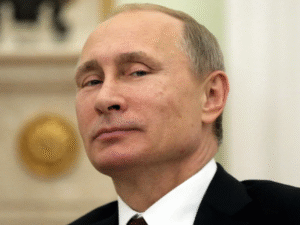$XOM $TOT $BTC
#Namibia #OilAndGas #EnergyIndustry #GDPgrowth #Economy #EconomicBoom #EmergingMarkets #NaturalResources #Elections2023 #AfricanMarkets #GlobalMarkets #EnergySector
Namibia is looking to capitalize on recent oil and gas discoveries to accelerate its economic growth. Currently striving for a rapidly enhanced GDP, the southwest African nation hopes to double the average growth rate by leveraging its resource finds. Namibia’s Energy Minister, Tom Alweendo, indicated that this push could not have arrived at a more crucial juncture, as the country faces not only rising expectations from its population but also growing fiscal challenges. The oil and gas sectors, already anticipated to increase activity dramatically, could serve as a pivotal answer to the country’s economic aspirations. As a new entrant into the global energy market, Namibia aims to achieve an economic transformation similar to those seen in other resource-rich nations, while avoiding pitfalls like the resource curse. Investors across global energy markets are watching Namibia to assess both an immediate boost and long-term sustainability prospects.
Namibia’s government remains under pressure as elections approach, with a restive population growing increasingly vocal about economic opportunities and job creation. The discovery of natural oil reservoirs offers a promising outlook for industries connected to energy production, such as exploration, drilling, transportation, and infrastructure. For international organizations, global energy firms like $XOM (ExxonMobil) or $TOT (TotalEnergies) may be well-positioned to tap into these untapped resources, exploiting the country’s strategic geographic location and its proximity to major sea routes for oil and gas exports. The timing of these finds is crucial for the ruling administration, allowing them to boost public sentiment and showcase achievements amidst political uncertainty. In a scenario where oil prices remain favorable internationally, this could provide significant fiscal cushioning for Namibia.
Namibia’s potential to double GDP also reflects strong downstream effects on broader industries, from local services to international importers looking at long-term export capacity. The energy infrastructure investment opportunities are vast, including shipping, port facilities, and pipelines, which could spark further labor market stimulation. Looking at global oil price trends and existing production chains, it’s likely that Namibia’s entrance into the global play may offer a diversification benefit to non-OPEC (Organization of Petroleum Exporting Countries) aligned markets. The inherent risks of market volatility and fluctuating commodity prices also challenge Namibia’s ability to sustain long-term growth, but with prudent financial management and strategic partnerships with foreign investors, such as multinational energy firms, the nation’s outlook appears promising.
However, stakeholders need to reckon with broader risks, including political instability and regulatory uncertainty, which have hampered growth in other resource-rich regions in Africa. Namibia will need to design clear and favorable policies that incentivize sustainable extraction while generating local employment and mitigating environmental impacts. The outlook remains cautiously optimistic as investors follow the unfolding developments in Namibia’s oil and gas sector, with some already eyeing the future potential of digitized energy transactions with assets like $BTC in a post-blockchain energy world. If executed carefully, Namibia could not only double its current GDP but also transform into one of the key energy-exporting nations on the continent, shifting the global energy markets toward new supply chains.







Comments are closed.